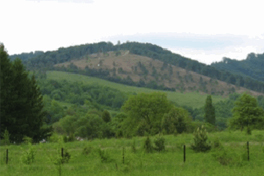 Clear-cutting occurring at the edge of the POLONINY National Park in eastern Slovakia.
Photo: Heino Meessen, CDE
Clear-cutting occurring at the edge of the POLONINY National Park in eastern Slovakia.
Photo: Heino Meessen, CDE
In the Carpathian Mountains of Slovakia, increasing the participation and benefit-sharing of local populations in and around protected areas is a relatively new goal on the country’s agenda. The Slovak Nature Conservancy (SNC), Slovakia’s main state authority charged with managing protected areas, has requested that CDE assist in developing and improving its methodology for assessing management approaches. With funding from the Swiss Contribution to the New Member States of the EU, this is a participatory component within a larger programme on nature conservation, running from 2012 to 2015. Implemented jointly by Slovak state authorities and CDE, it seeks to address the following questions:
The project will provide baseline assessments of selected protected areas, including ecological, social, and economic indicators. University partners in Slovakia (Banska Bystrica and Zilina) and Switzerland (Bern) are jointly carrying out the assessments. However, the project goes far beyond research: Thanks to a joint Slovak–Swiss financing mechanism, Slovak partners will implement small projects – or “seed money” activities – proposed by local stakeholders. These small projects will hopefully result in tangible, lasting benefits for local stakeholders – particularly farmers – in and around protected areas.
The result may be new and better forms of cooperation between the SNC, local protected-area authorities, and local populations, enabling a more grounded approach to conservation and greater acceptance of nature-conservation goals among residents. Finally, Slovak mountain farmers stand to benefit from more realistic outreach activities and a greater stake in “their“ protected area. Or, as one senior SNC staff member put it: “After decades of top-down definition of protected areas, and [subsequent privatisation] of agricultural lands and pastures after 1990, we really need a transition to participation to [better balance] nature conservation [goals] and local benefits.“